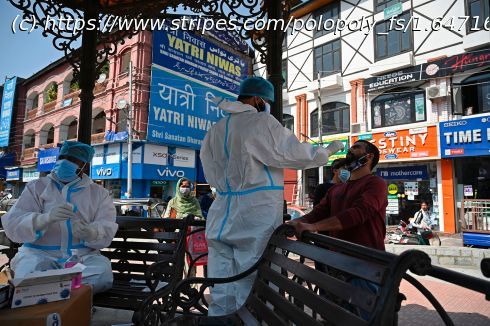Extensive contact tracing in two southern Indian states offers the strongest evidence yet that a few superspreading individuals are responsible for a disproportionate share of new coronavirus infections, according to a study published Wednesday in the journal Science.
Stars and Stripes is making stories on the coronavirus pandemic available free of charge. See other free reports here. Sign up for our daily coronavirus newsletter here. Please support our journalism with a subscription. SINGAPORE (Tribune News Service) — In the bleak ranking of worst COVID-19 outbreaks, the United States, with 7.2 million infections, is likely to be eclipsed only by India, which has 1 million fewer cases but is catching up fast. Yet parts of India have led the world in one aspect of the pandemic response: contact tracing — the labor-intensive, time-sensitive, painstaking work of identifying people who were exposed to a known infected person. Extensive contact tracing in two southern Indian states offers the strongest evidence yet that a few superspreading individuals are responsible for a disproportionate share of new coronavirus infections, according to a study published Wednesday in the journal Science. It also suggests that children are more efficient transmitters of the virus than widely believed. A team of Indian and U.S. researchers examined data from 575,071 individuals who were tested after coming into contact with 84,965 people with confirmed cases of COVID-19. That’s an average of seven contacts per case, and a cohort more than 10 times larger than in a previous study from South Korea that mapped how the virus was transmitted. “It’s the largest epidemiological study anywhere on COVID by far,” said the lead author, Ramanan Laxminarayan of the Center for Disease Dynamics, Economics and Policy, in New Delhi. Laxminarayan and his colleagues found that 8% of people with COVID-19 accounted for 60% of the new infections observed among the contacts. Meanwhile, seven out of 10 COVID-19 patients were not linked to any new cases. The finding underscores the essential role of superspreaders in the COVID-19 pandemic: One individual or event, such as in a poorly ventilated indoor space, can trigger a high number of new infections, while others might not transmit the virus at all.
Home
United States
USA — Science Largest study of COVID-19 transmission highlights essential role of superspreaders






